

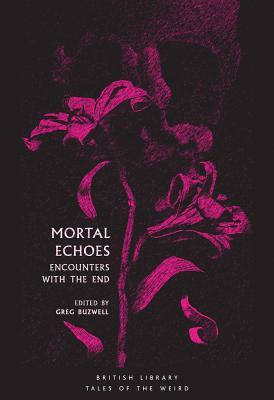
Books in series

From the Depths and Other Strange Tales of the Sea
2018

Glimpses of the Unknown
Lost Ghost Stories
2018

Mortal Echoes
Encounters With the End
2018

Spirits of the Season
Christmas Hauntings
2019

Ignoto
2019

Evil Roots
Killer Tales of the Botanical Gothic
2019

Promethean Horrors
Classic Stories of Mad Science
2019

A Phantom Lover
And Other Dark Tales
1890

Weird Woods
Tales from the Haunted Forests of Britain
2020

Reinas del abismo. Cuentos fantasmales de las maestras de lo inquietante
2020

Chill Tidings
Dark Tales of the Christmas Season
2020

Dangerous Dimensions
Mind-Bending Tales of the Mathematical Weird
2021

Minor Hauntings
Chilling Tales of Spectral Youth
2021

Cornish Horrors
Tales From the Land's End
2021

Randalls Round
1929

Sunless Solstice
Strange Christmas Tales for the Longest Nights
2021

The Night Wire and Other Tales of Weird Media
2022

Our Haunted Shores
Tales from the Coasts of the British Isles
2022
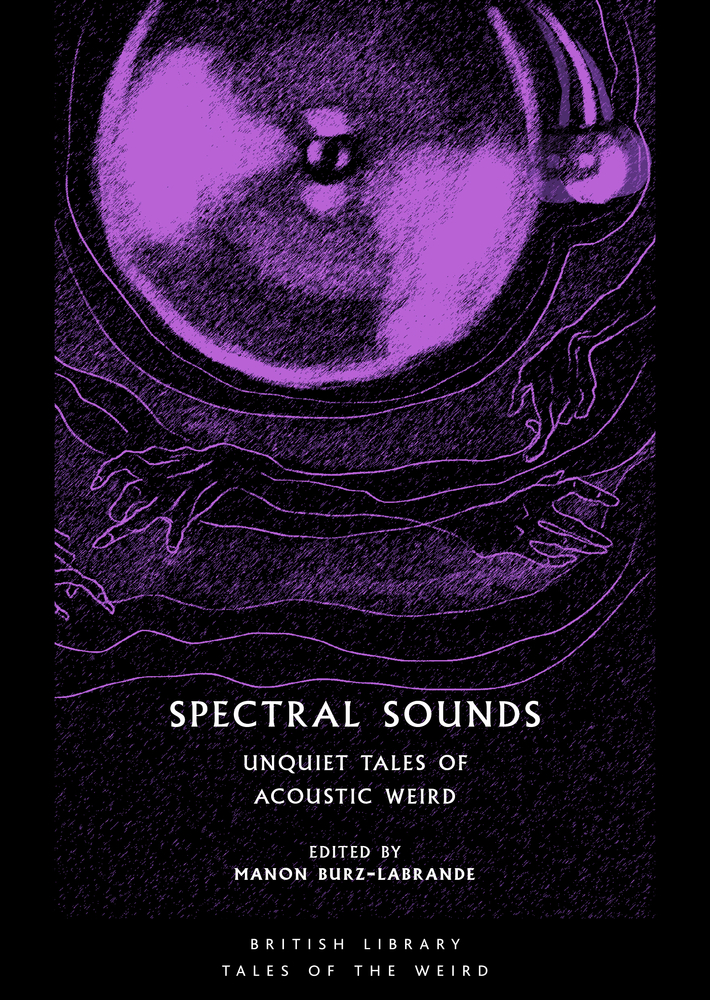
Spectral Sounds
Unquiet Tales of Acoustic Weird
2022

Haunters at the Hearth
Eerie Tales For Christmas Nights
2022
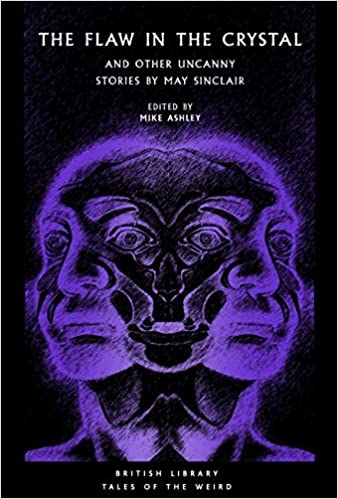
The Flaw in the Crystal
And Other Uncanny Stories by May Sinclair
2020
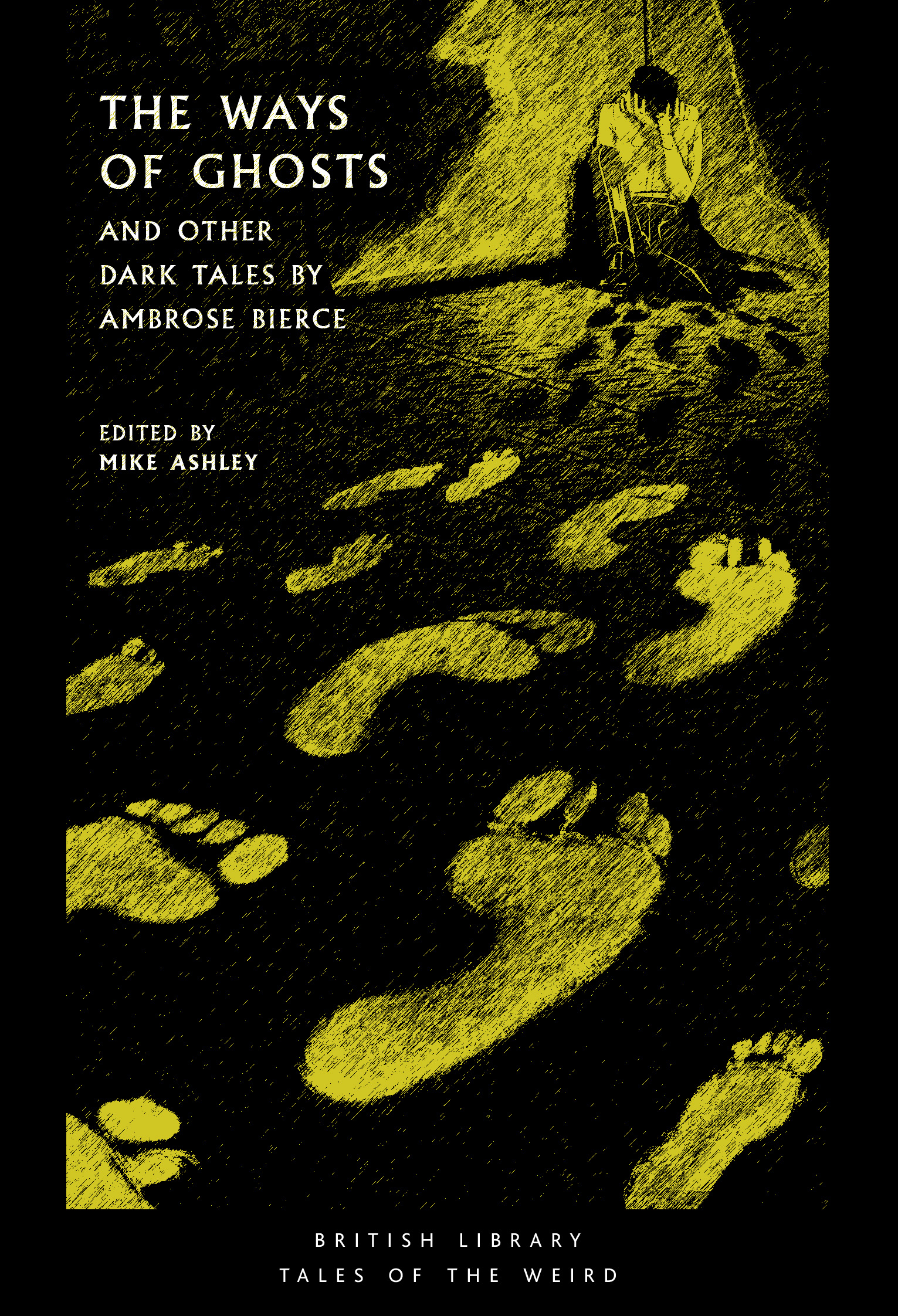
The Ways of Ghosts
And Other Dark Tales by Ambrose Bierce
2023

Roads of Destiny
And Other Tales of Alternative Histories and Parallel Realms
2023

Doomed Romances
Strange Tales of Uncanny Love
2024

Eerie East Anglia
Fearful Tales of Field and Fen
2024

The Haunted Trail
Classic Tales of the Rambling Weird
2024

The Weird Tales of Dorothy K Haynes
2024

The Haunted Vintage
1921
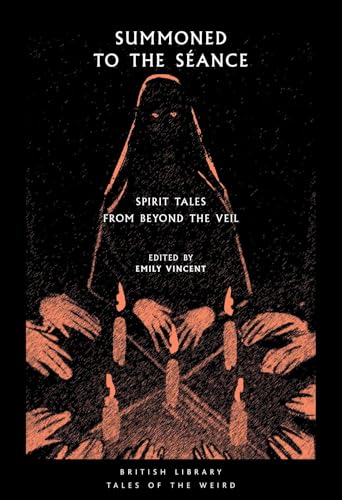
Summoned to the Séance
Spirit Tales from Beyond the Veil
2024
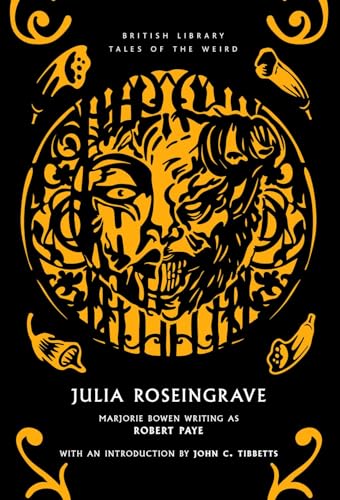
Julia Roseingrave
2017
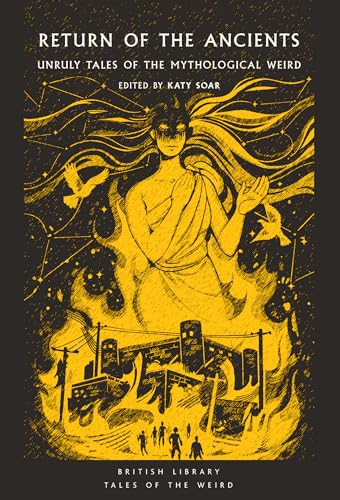
Return of the Ancients
Unruly Tales of the Mythological Weird
2025

The Ghost Slayers
Thrilling Tales of Occult Detection
2022
Authors

Amelia Ann Blandford Edwards An English novelist, journalist, lady traveller and Egyptologist, born to an Irish mother and a father who had been a British Army officer before becoming a banker. Edwards was educated at home by her mother, showing considerable promise as a writer at a young age. She published her first poem at the age of 7, her first story at age 12. Edwards thereafter proceeded to publish a variety of poetry, stories and articles in a large number of magazines. Edwards' first full-length novel was My Brother's Wife (1855). Her early novels were well received, but it was Barbara's History (1864), a novel of bigamy, that solidly established her reputation as a novelist. She spent considerable time and effort on their settings and backgrounds, estimating that it took her about two years to complete the researching and writing of each. This painstaking work paid off, her last novel, Lord Brackenbury (1880), emerged as a run-away success which went to 15 editions. In the winter of 1873–1874, accompanied by several friends, Edwards toured Egypt, discovering a fascination with the land and its cultures, both ancient and modern. Journeying southwards from Cairo in a hired dahabiyeh (manned houseboat), the companions visited Philae and ultimately reached Abu Simbel where they remained for six weeks. During this last period, a member of Edwards' party, the English painter Andrew McCallum, discovered a previously-unknown sanctuary which bore her name for some time afterwards. Having once returned to the UK, Edwards proceeded to write a vivid description of her Nile voyage, publishing the resulting book in 1876 under the title of A Thousand Miles up the Nile. Enhanced with her own hand-drawn illustrations, the travelogue became an immediate bestseller. Edwards' travels in Egypt had made her aware of the increasing threat directed towards the ancient monuments by tourism and modern development. Determined to stem these threats by the force of public awareness and scientific endeavour, Edwards became a tireless public advocate for the research and preservation of the ancient monuments and, in 1882, co-founded the Egypt Exploration Fund (now the Egypt Exploration Society) with Reginald Stuart Poole, curator of the Department of Coins and Medals at the British Museum. Edwards was to serve as joint Honorary Secretary of the Fund until her death some 14 years later. With the aims of advancing the Fund's work, Edwards largely abandoned her other literary work to concentrate solely on Egyptology. In this field she contributed to the ninth edition of the Encyclopædia Britannica, to the American supplement of that work, and to the Standard Dictionary. As part of her efforts Edwards embarked on an ambitious lecture tour of the United States in the period 1889–1890. The content of these lectures was later published under the title Pharaohs, Fellahs, and Explorer (1891). Amelia Edwards died at Weston-super-Mare, Somerset, on the 15 April 1892, bequeathing her collection of Egyptian antiquities and her library to University College London, together with a sum of £2,500 to found an Edwards Chair of Egyptology. She was buried in St Mary's Church Henbury, Bristol, Wikipedia: Amelia B. Edwards

See also H. Heron. Major Hesketh Vernon Prichard, later Hesketh-Prichard, DSO, MC, FRGS, FZS (17 November 1876 – 14 June 1922) was an explorer, adventurer, big-game hunter and marksman who made a significant contribution to sniping practice within the British Army during the First World War. Concerned not only with improving the quality of marksmanship, the measures he introduced to counter the threat of German snipers were credited by a contemporary with saving the lives of over 3,500 Allied soldiers. During his lifetime, he also explored territory never seen before, played cricket at first-class level, including on overseas tours, wrote short stories and novels (one of which was turned into a Douglas Fairbanks film) and was a successful newspaper correspondent and travel writer. His many activities brought him into the highest social and professional circles. Despite a lifetime's passion for shooting, he was an active campaigner for animal welfare and succeeded in seeing legal measures introduced for their protection.

See J.H. Riddell Charlotte Riddell aka Mrs J.H. Riddell was a one of the most popular and influential writers of the Victorian period. The author of 56 books, novels and short stories, she was also part owner and editor of the St. James' Magazine, one of the most prestigious literary magazines of the 1860s. (from Wikipedia)


Violet Mary Firth Evans (better known as Dion Fortune), was a British occultist and author. Her pseudonym was inspired by her family motto "Deo, non fortuna" (Latin for "by God, not fate"). From 1919 she began writing a number of novels and short stories that explored various aspects of magic and mysticism, including The Demon Lover, The Winged Bull, The Goat-Foot God, and The Secrets of Dr. Taverner. This latter is a collection of short stories based on her experiences with Theodore Moriarty. Two of her novels, The Sea Priestess and Moon Magic, became influential within the religion of Wicca, especially upon Doreen Valiente. Of her non-fiction works on magical subjects, the best remembered of her books are; The Cosmic Doctrine, meant to be a summation of her basic teachings on mysticism; The Mystical Qabalah, an introduction to Hermetic Qabalah; and Psychic Self Defence, a manual on how to protect oneself from psychic attacks. Though some of her writings may seem dated to contemporary readers, they have the virtue of lucidity and avoid the deliberate obscurity that characterised many of her forerunners and contemporaries.
Greye La Spina was one of the few women to write regularly for the leading fantasy/horror pulps, and was a contributor to the very first issue of the first American pulp magazine devoted exclusively to tales of horror and the fantastic. Born in Wakefield, Massachusetts, the daughter of a Methodist minister, she was a precocious child, publishing her own "small press" newspaper at the age of 10, with pages of poems and local gossip. As a teenager, she won a literary contest and had a story published in Connecticut Magazine. La Spina gave up writing to attend to her marriage and the raising of a daughter, but in her early thirties she was drawn back to it. In the 1920s and 1930s, La Spina worked as a journalist, and she was said to have been the first female newspaper photographer. Following the death of her husband, La Spina married again, to a deposed Italian baron.

Ambrose Gwinnett Bierce (1842-1914) was an American editorialist, journalist, short story writer, fabulist and satirist. Today, he is best known for his short story, An Occurrence at Owl Creek Bridge and his satirical lexicon, The Devil's Dictionary. The sardonic view of human nature that informed his work – along with his vehemence as a critic, with his motto "nothing matters" – earned him the nickname "Bitter Bierce." Despite his reputation as a searing critic, however, Bierce was known to encourage younger writers, including poet George Sterling and fiction writer W. C. Morrow. Bierce employed a distinctive style of writing, especially in his stories. This style often embraces an abrupt beginning, dark imagery, vague references to time, limited descriptions, the theme of war, and impossible events. Bierce disappeared in December 1913 at the age of 71. He is believed to have traveled to Mexico to gain a firsthand perspective on that country's ongoing revolution. Despite an abundance of theories, Bierce's ultimate fate remains a mystery. He wrote in one of his final letters: "Good-bye. If you hear of my being stood up against a Mexican stone wall and shot to rags, please know that I think it is a pretty good way to depart this life. It beats old age, disease, or falling down the cellar stairs. To be a Gringo in Mexico—ah, that is euthanasia!"

Blackwood was born in Shooter's Hill (today part of south-east London, but then part of northwest Kent) and educated at Wellington College. His father was a Post Office administrator who, according to Peter Penzoldt, "though not devoid of genuine good-heartedness, had appallingly narrow religious ideas." Blackwood had a varied career, farming in Canada, operating a hotel, as a newspaper reporter in New York City, and, throughout his adult life, an occasional essayist for various periodicals. In his late thirties, he moved back to England and started to write stories of the supernatural. He was very successful, writing at least ten original collections of short stories and eventually appearing on both radio and television to tell them. He also wrote fourteen novels, several children's books, and a number of plays, most of which were produced but not published. He was an avid lover of nature and the outdoors, and many of his stories reflect this. Lovecraft wrote of Blackwood: "He is the one absolute and unquestioned master of weird atmosphere." His powerful story "The Willows," which effectively describes another dimension impinging upon our own, was reckoned by Lovecraft to be not only "foremost of all" Blackwood's tales but the best "weird tale" of all time. Among his thirty-odd books, Blackwood wrote a series of stories and short novels published as John Silence, Physician Extraordinary (1908), which featured a "psychic detective" who combined the skills of a Sherlock Holmes and a psychic medium. Blackwood also wrote light fantasy and juvenile books. The son of a preacher, Blackwood had a life-long interest in the supernatural, the occult, and spiritualism, and firmly believed that humans possess latent psychic powers. The autobiography Episodes Before Thirty (1923) tells of his lean years as a journalist in New York. In the late 1940s, Blackwood had a television program on the BBC on which he read . . . ghost stories!
Née Gladys Gordon Trenery Author and pianist Also wrote under the pen name of Marjory E. Lambe

Gertrude Franklin Horn Atherton (October 30, 1857 – June 14, 1948) was a prominent and prolific American author. Many of her novels are set in her home state of California. Her bestseller Black Oxen (1923) was made into a silent movie of the same name. In addition to novels, she wrote short stories, essays, and articles for magazines and newspapers on such issues as feminism, politics, and war. She was strong-willed, independent-minded, and sometimes controversial. She wrote using the pen names Asmodeus and Frank Lin, a play on her middle name.
Mary Elizabeth Counselman was an American writer of short stories and poetry. https://en.wikipedia.org/wiki/Mary_El...

Edward Frederic "E. F." Benson was an English novelist, biographer, memoirist, archaeologist and short story writer. E. F. Benson was the younger brother of A.C. Benson, who wrote the words to "Land of Hope and Glory", Robert Hugh Benson, author of several novels and Roman Catholic apologetic works, and Margaret Benson, an author and amateur Egyptologist. Benson died during 1940 of throat cancer at the University College Hospital, London. He is buried in the cemetery at Rye, East Sussex. Last paragraph from Wikipedia

Thomas Anstey Guthrie was an English novelist and journalist, who wrote his comic novels under the pseudonym F. Anstey. He was born in Kensington, London, to Augusta Amherst Austen, an organist and composer, and Thomas Anstey Guthrie. He was educated at King's College School and at Trinity Hall, Cambridge, and was called to the bar in 1880. But the popular success of his story Vice Versa (1882) with its topsy turvy substitution of a father for his schoolboy son, at once made his reputation as a humorist of an original type. He published in 1883 a serious novel, The Giant's Robe; but, in spite of its excellence, he discovered (and again in 1889 with The Pariah) that it was not as a serious novelist but as a humorist that the public insisted on regarding him. As such, his reputation was further confirmed by The Black Poodle (1884), The Tinted Venus (1885), A Fallen Idol (1886), and other works. Baboo Jabberjee B.A. (1897), and A Bayard from Bengal (1902) are humorous yet truthful studies of the East Indian with a veneer of English civilization. Guthrie became an important member of the staff of Punch magazine, in which his voces populi and his humorous parodies of a reciter's stock-piece (Burglar Bill, &c.) represent his best work. In 1901, his successful farce The Man from Blankleys, based on a story that originally appeared in Punch, was first produced at the Prince of Wales Theatre, in London. He wrote Only Toys (1903) and Salted Almonds (1906). Many of Anstey's stories have been adapted into theatrical productions and motion pictures. The Tinted Venus was adapted by S.J. Perelman, Ogden Nash, and Kurt Weill into One Touch of Venus in 1943. Vice Versa has been filmed many times, usually transposed in setting and without any credit to the original book. Another of his novels, The Brass Bottle, has also been filmed more than once, including The Brass Bottle (1964).
Information taken from: http://orlando.cambridge.org/public/s... Born Evelyn Mary Clowes. Also known as Evelyn May Mordaunt. Primarily published under the name Elinor Mordaunt. Also published under the pen name: A. Riposte. ———————————————- Also a wikipedia article: http://en.wikipedia.org/wiki/Elinor\_M... ———————————————- Virginia Woolf writes about two of her books in Contemporary Writers: Essays on Twentieth Century Books and Authors

Joseph Payne Brennan was an American writer of fantasy and horror fiction, and also a poet. Brennan's first professional sale came in December 1940 with the publication of the poem, "When Snow Is Hung", which appeared in the Christian Science Monitor Home Forum, and he continued writing poetry up until the time of his death. He is the father of Noel-Anne Brennan who has published several fantasy novels.
Alfred McLelland Burrage (1889-1956) was a British writer. He was noted in his time as an author of fiction for boys which he published under the pseudonym Frank Lelland, including a popular series called "Tufty". Burrage is now remembered mainly for his horror fiction. Source: Wikipedia

Alice Jane de Courcy Leake Askew aka Alice Askew She was part of the husband-and-wife team of Alice and Claude Askew, both of whom perished when their passenger ship was torpedoed during the Great War in 1917. Askew was co-author of the Aylmer Vance stories wherein the protagonist, Vance, undertakes investigations on behalf of the ‘Ghost Circle’ and regularly exposes false mediums and the like.


John Boynton Priestley, the son of a schoolmaster, was born in Bradford in September 1894, and after schooling he worked for a time in the local wool trade. Following the outbreak of the Great War in 1914, Priestley joined the British Army, and was sent to France—in 1915 taking part in the Battle of Loos. After being wounded in 1917 Priestley returned to England for six months; then, after going back to the Western Front he suffered the consequences of a German gas attack, and, treated at Rouen, he was declared unfit for active service and was transferred to the Entertainers Section of the British Army. When Priestley left the army he studied at Cambridge University, where he completed a degree in Modern History and Political Science. Subsequently he found work as theatre reviewer with the Daily News, and also contributed to the Spectator, the Challenge and Nineteenth Century. His earliest books included The English Comic Characters (1925), The English Novel (1927), and English Humour (1928). His breakthrough came with the immensely popular novel The Good Companions, published in 1929, and Angel Pavement followed in 1930. He emerged, too, as a successful dramatist with such plays as Dangerous Corner (1932), Time and the Conways (1937), When We Are Married (1938) and An Inspector Calls (1947). The publication of English Journey in 1934 emphasised Priestley's concern for social problems and the welfare of ordinary people. During the Second World War Priestley became a popular and influential broadcaster with his famous Postscripts that followed the nine o'clock news BBC Radio on Sunday evenings. Starting on 5th June 1940, Priestley built up such a following that after a few months it was estimated that around 40 per cent of the adult population in Britain was listening to the programme. Some members of the Conservative Party, including Winston Churchill, expressed concern that Priestley might be expressing left-wing views on the programme, and, to his dismay, Priestley was dropped after his talk on 20th October 1940. After the war Priestley continued his writing, and his work invariably provoked thought, and his views were always expressed in his blunt Yorkshire style. His prolific output continued right up to his final years, and to the end he remained the great literary all-rounder. His favourite among his books was for many years the novel Bright Day, though he later said he had come to prefer The Image Men. It should not be overlooked that Priestley was an outstanding essayist, and many of his short pieces best capture his passions and his great talent and his mastery of the English language. He set a fine example for any would-be author.

Eleanor Scott (1892~1965) was born Helen Madeline Leys in Middlesex, the daughter of John Kirkwood Leys, barrister and novelist. Her early education was provided solely by her mother, Ellen, who prepared both of her daughters for going on to Oxford. After the Great War, Helen Leys became a teacher, later rising to the position of Principal of an Oxford teacher training college. Her first short story to appear in print was ‘The Room’, which appeared in The Cornhill Magazine in October 1923, credited to H. M. Leys. In 1928, the first work bearing the pen name Eleanor Scott appeared: the controversial novel War Among Ladies, which was published by Ernest Benn... Her final novel, Puss in the Corner... was published in November 1934. [http://hauntedlibraryblog.blogspot.de...]

Izola Forrester (November 15, 1878 – March 6, 1944) was an American author who was born Izola Louise Wallingford. Forrester was a pioneer journalist in the heyday of magazine and newspaper publishing in the early part of the 20th century. She was also one of the early women screenwriters of silent films, drawing on her books and stories for their plots, as well as the dramas she was familiar with as a child performer in the 1880s, trouping with her mother Ogarita Booth Henderson (Oct. 23, 1859 – April 12, 1892). Ogarita was a stage actress who believed herself to be the daughter of John Wilkes Booth, the assassin of U. S. President Abraham Lincoln.

Marjorie Bowen (pseudonym of Mrs Gabrielle Margaret V[ere] Long née Campbell), was a British author who wrote historical romances, supernatural horror stories, popular history and biography. Her total output numbers over 150 volumes with the bulk of her work under the 'Bowen' pseudonym. She also wrote under the names Joseph Shearing, George R. Preedy, John Winch, Robert Paye, and Margaret Campbell. As Joseph Shearing, she wrote several sinister gothic romances full of terror and mystery. Many of these stories were published as Berkley Medallion Books. Several of her books were adapted as films. Her books are much sought after by aficionados of gothic horror and received praise from critics. Bowen's alcoholic father left the family at an early age and was eventually found dead on a London street. After this, Bowen's prolific writings were the chief financial support for her family. She was married twice: first, from 1912-16, to a Sicilian named Zefferino Emilio Constanza, who died of tuberculosis, and then to one Arthur L. Long. Her first novel was The Viper of Milan (1906), after which she produced a steady stream of writings until the day of her death on 23rd December 1952. Her last, posthumous, novel was The Man with the Scales (1954).

Walter John de la Mare was an English poet, short story writer and novelist, probably best remembered for his works for children and The Listeners. He was descended from a family of French Huguenots, and was educated at St Paul's School. His first book, Songs of Childhood, was published under the name Walter Ramal. He worked in the statistics department of the London office of Standard Oil for eighteen years while struggling to bring up a family, but nevertheless found enough time to write, and, in 1908, through the efforts of Sir Henry Newbolt he received a Civil List pension which enabled him to concentrate on writing; One of de la Mare's special interests was the imagination, and this contributed both to the popularity of his children's writing and to his other work occasionally being taken less seriously than it deserved. De la Mare also wrote some subtle psychological horror stories; "Seaton's Aunt" and "Out of the Deep" are noteworthy examples. His 1921 novel, Memoirs of a Midget, won the James Tait Black Memorial Prize for fiction.

Marie Adelaide Elizabeth Rayner Lowndes, née Belloc (5 August 1868 – 14 November 1947), was a prolific English novelist. Active from 1898 until her death, she had a literary reputation for combining exciting incident with psychological interest. Two of her works were adapted for the screen. Born in Marylebone, London and raised in La Celle-Saint-Cloud, France, Mrs Belloc Lowndes was the only daughter of French barrister Louis Belloc and English feminist Bessie Parkes. Her younger brother was Hilaire Belloc, whom she wrote of in her last work, The Young Hilaire Belloc (published posthumously in 1956). Her paternal grandfather was the French painter Jean-Hilaire Belloc, and her maternal great-great-grandfather was Joseph Priestley. In 1896, she married Frederick Sawrey A. Lowndes (1868–1940). Her mother died in 1925, 53 years after her father. She published a biography, H.R.H. The Prince of Wales: An Account of His Career, in 1898. From then on, she published novels, reminiscences, and plays at the rate of one per year until 1946. In the memoir, I, too, Have Lived in Arcadia (1942), she told the story of her mother's life, compiled largely from old family letters and her own memories of her early life in France. A second autobiography Where love and friendship dwelt, appeared posthumously in 1948. She died 14 November 1947 at the home of her elder daughter, Countess Iddesleigh (wife of the third Earl) in Eversley Cross, Hampshire, an was interred in France, in La Celle-Saint-Cloud near Versailles, where she spent her youth. (from Wikipedia)

Margaret St. Clair (February 17, 1911 Huchinson, Kansas - November 22, 1995 Santa Rosa, CA) was an American science fiction writer, who also wrote under the pseudonyms Idris Seabright and Wilton Hazzard. Born as Margaret Neeley, she married Eric St. Clair in 1932, whom she met while attending the University of California, Berkeley. In 1934 she graduated with a Master of Arts in Greek classics. She started writing science fiction with the short story "Rocket to Limbo" in 1946. Her most creative period was during the 1950s, when she wrote such acclaimed stories as "The Man Who Sold Rope to the Gnoles" (1951), "Brightness Falls from the Air" (1951), "An Egg a Month from All Over" (1952), and "Horrer Howce" (1956). She largely stopped writing short stories after 1960. The Best of Margaret St. Clair (1985) is a representative sampler of her short fiction. Apart from more than 100 short stories, St. Clair also wrote nine novels. Of interest beyond science fiction is her 1963 novel Sign of the Labrys, for its early use of Wicca elements in fiction. Her interests included witchcraft, nudism, and feminism. She and her husband decided to remain childless.

Pseudonym of Katherine Mary Deville Dalton Renoir (1881-1963) Katherine Dalton was born in Hammersmith, London in 1881, the only child of a Canadian father and English mother. The author wrote two well-received early novels, Olive in Italy (1909), and The Sword of Love (1920). However, her career in crime fiction did not begin until 1924, after which Moray Dalton published twenty-nine mysteries, the last in 1951. The majority of these feature her recurring sleuths, Scotland Yard inspector Hugh Collier and private inquiry agent Hermann Glide. Moray Dalton married Louis Jean Renoir in 1921, and the couple had a son a year later. The author lived on the south coast of England for the majority of her life following the marriage. She died in Worthing, West Sussex, in 1963.

Edith Nesbit (married name Edith Bland; 15 August 1858 – 4 May 1924) was an English author and poet; she published her books for children under the name of E. Nesbit. She wrote or collaborated on over 60 books of fiction for children, several of which have been adapted for film and television. She was also a political activist and co-founded the Fabian Society, a socialist organisation later connected to the Labour Party. Edith Nesbit was born in Kennington, Surrey, the daughter of agricultural chemist and schoolmaster John Collis Nesbit. The death of her father when she was four and the continuing ill health of her sister meant that Nesbit had a transitory childhood, her family moving across Europe in search of healthy climates only to return to England for financial reasons. Nesbit therefore spent her childhood attaining an education from whatever sources were available—local grammars, the occasional boarding school but mainly through reading. At 17 her family finally settled in London and aged 19, Nesbit met Hubert Bland, a political activist and writer. They became lovers and when Nesbit found she was pregnant they became engaged, marrying in April 1880. After this scandalous (for Victorian society) beginning, the marriage would be an unconventional one. Initially, the couple lived separately—Nesbit with her family and Bland with his mother and her live-in companion Maggie Doran. Initially, Edith Nesbit books were novels meant for adults, including The Prophet's Mantle (1885) and The Marden Mystery (1896) about the early days of the socialist movement. Written under the pen name of her third child 'Fabian Bland', these books were not successful. Nesbit generated an income for the family by lecturing around the country on socialism and through her journalism (she was editor of the Fabian Society's journal, Today). In 1899 she had published The Adventures of the Treasure Seekers to great acclaim.

Sir Arthur Ignatius Conan Doyle was born the third of ten siblings on 22 May 1859 in Edinburgh, Scotland. His father, Charles Altamont Doyle, a talented illustrator, was born in England of Irish descent, and his mother, born Mary Foley, was Irish. They were married in 1855. Although he is now referred to as "Conan Doyle", the origin of this compound surname (if that is how he meant it to be understood) is uncertain. His baptism record in the registry of St Mary's Cathedral in Edinburgh gives 'Arthur Ignatius Conan' as his Christian name, and simply 'Doyle' as his surname. It also names Michael Conan as his godfather. At the age of nine Conan Doyle was sent to the Roman Catholic Jesuit preparatory school, Hodder Place, Stonyhurst. He then went on to Stonyhurst College, leaving in 1875. From 1876 to 1881 he studied medicine at the University of Edinburgh. This required that he provide periodic medical assistance in the towns of Aston (now a district of Birmingham) and Sheffield. While studying, Conan Doyle began writing short stories. His first published story appeared in "Chambers' Edinburgh Journal" before he was 20. Following his graduation, he was employed as a ship's doctor on the SS Mayumba during a voyage to the West African coast. He completed his doctorate on the subject of tabes dorsalis in 1885. In 1885 Conan Doyle married Louisa (or Louise) Hawkins, known as "Touie". She suffered from tuberculosis and died on 4 July 1906. The following year he married Jean Elizabeth Leckie, whom he had first met and fallen in love with in 1897. Due to his sense of loyalty he had maintained a purely platonic relationship with Jean while his first wife was alive. Jean died in London on 27 June 1940. Conan Doyle fathered five children. Two with his first wife—Mary Louise (28 January 1889 – 12 June 1976), and Arthur Alleyne Kingsley, known as Kingsley (15 November 1892 – 28 October 1918). With his second wife he had three children—Denis Percy Stewart (17 March 1909 – 9 March 1955), second husband in 1936 of Georgian Princess Nina Mdivani (circa 1910 – 19 February 1987; former sister-in-law of Barbara Hutton); Adrian Malcolm (19 November 1910–3 June 1970) and Jean Lena Annette (21 December 1912–18 November 1997). Conan Doyle was found clutching his chest in the hall of Windlesham, his house in Crowborough, East Sussex, on 7 July 1930. He had died of a heart attack at age 71. His last words were directed toward his wife: "You are wonderful." The epitaph on his gravestone in the churchyard at Minstead in the New Forest, Hampshire, reads: STEEL TRUE BLADE STRAIGHT ARTHUR CONAN DOYLE KNIGHT PATRIOT, PHYSICIAN & MAN OF LETTERS Conan Doyle's house, Undershaw, located in Hindhead, south of London, where he had lived for a decade, had been a hotel and restaurant between 1924 and 2004. It now stands empty while conservationists and Conan Doyle fans fight to preserve it. A statue honours Conan Doyle at Crowborough Cross in Crowborough, where Conan Doyle lived for 23 years. There is also a statue of Sherlock Holmes in Picardy Place, Edinburgh, close to the house where Conan Doyle was born. Series: * Sherlock Holmes

Herbert George Wells was born to a working class family in Kent, England. Young Wells received a spotty education, interrupted by several illnesses and family difficulties, and became a draper's apprentice as a teenager. The headmaster of Midhurst Grammar School, where he had spent a year, arranged for him to return as an "usher," or student teacher. Wells earned a government scholarship in 1884, to study biology under Thomas Henry Huxley at the Normal School of Science. Wells earned his bachelor of science and doctor of science degrees at the University of London. After marrying his cousin, Isabel, Wells began to supplement his teaching salary with short stories and freelance articles, then books, including The Time Machine (1895), The Island of Dr. Moreau (1896), The Invisible Man (1897), and The War of the Worlds (1898). Wells created a mild scandal when he divorced his cousin to marry one of his best students, Amy Catherine Robbins. Although his second marriage was lasting and produced two sons, Wells was an unabashed advocate of free (as opposed to "indiscriminate") love. He continued to openly have extra-marital liaisons, most famously with Margaret Sanger, and a ten-year relationship with the author Rebecca West, who had one of his two out-of-wedlock children. A one-time member of the Fabian Society, Wells sought active change. His 100 books included many novels, as well as nonfiction, such as A Modern Utopia (1905), The Outline of History (1920), A Short History of the World (1922), The Shape of Things to Come (1933), and The Work, Wealth and Happiness of Mankind (1932). One of his booklets was Crux Ansata, An Indictment of the Roman Catholic Church. Although Wells toyed briefly with the idea of a "divine will" in his book, God the Invisible King (1917), it was a temporary aberration. Wells used his international fame to promote his favorite causes, including the prevention of war, and was received by government officials around the world. He is best-remembered as an early writer of science fiction and futurism. He was also an outspoken socialist. Wells and Jules Verne are each sometimes referred to as "The Fathers of Science Fiction". D. 1946. More: http://philosopedia.org/index.php/H.\_... http://www.online-literature.com/well... http://www.hgwellsusa.50megs.com/ http://www.britannica.com/EBchecked/t... http://en.wikipedia.org/wiki/H.\_G.\_Wells